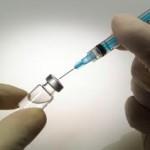A recent study on infants in China has successfully demonstrated that primary and booster vaccination with an inactivated poliovirus vaccine (IPV) provides the same degree of protection against poliomyelitis when compared to the standard live-attenuated oral poliovirus vaccines (OPV). OPV has been the mainstay of polio control for nearly six decades, since the 1950s however there are some disadvantages. There have been some cases, albeit rare, of OPV associated paralytic poliomyelitis; and outbreaks of poliomyelitis caused by vaccine-derived strains remain a potential threat in OPV using countries.
The present study published in Vaccine Journal reports findings on four clinical trials: two pilot safety studies (A and B) and two large randomized controlled studies (C and D). The latter two were designed to assess the immunogenicity, reactogenicity and safety of IPV. Study A was primary vaccination with IPV at 2, 3, 4 months; study B was booster vaccination with IPV at 18-24 months in OPV primed toddlers; study C primary vaccination with IPV or OPV (control group) at 2, 3, 4 months and study D was an extension of study C – an IPV boost at 18-24 months in combination with Diptheria-tetanus-pertussis (DTP), Haemophilus influenza type b (Hib) conjugate vaccine and hepatitis B.
One month after the third dose, 100% of children in the IPV group and at least 98.3% of children in the OPV group (control) had seroprotective antibody titres for each poliovirus type. The seroprotective antibody titres were at least 94.7% in the IPV group compared to at least 96.1% in the control group at the age of 18-24 months suggesting that IPV induced durable immunity. These findings demonstrate that IPV vaccination is immunogenic with an acceptable safety profile; thus a good alternative to OPV.
